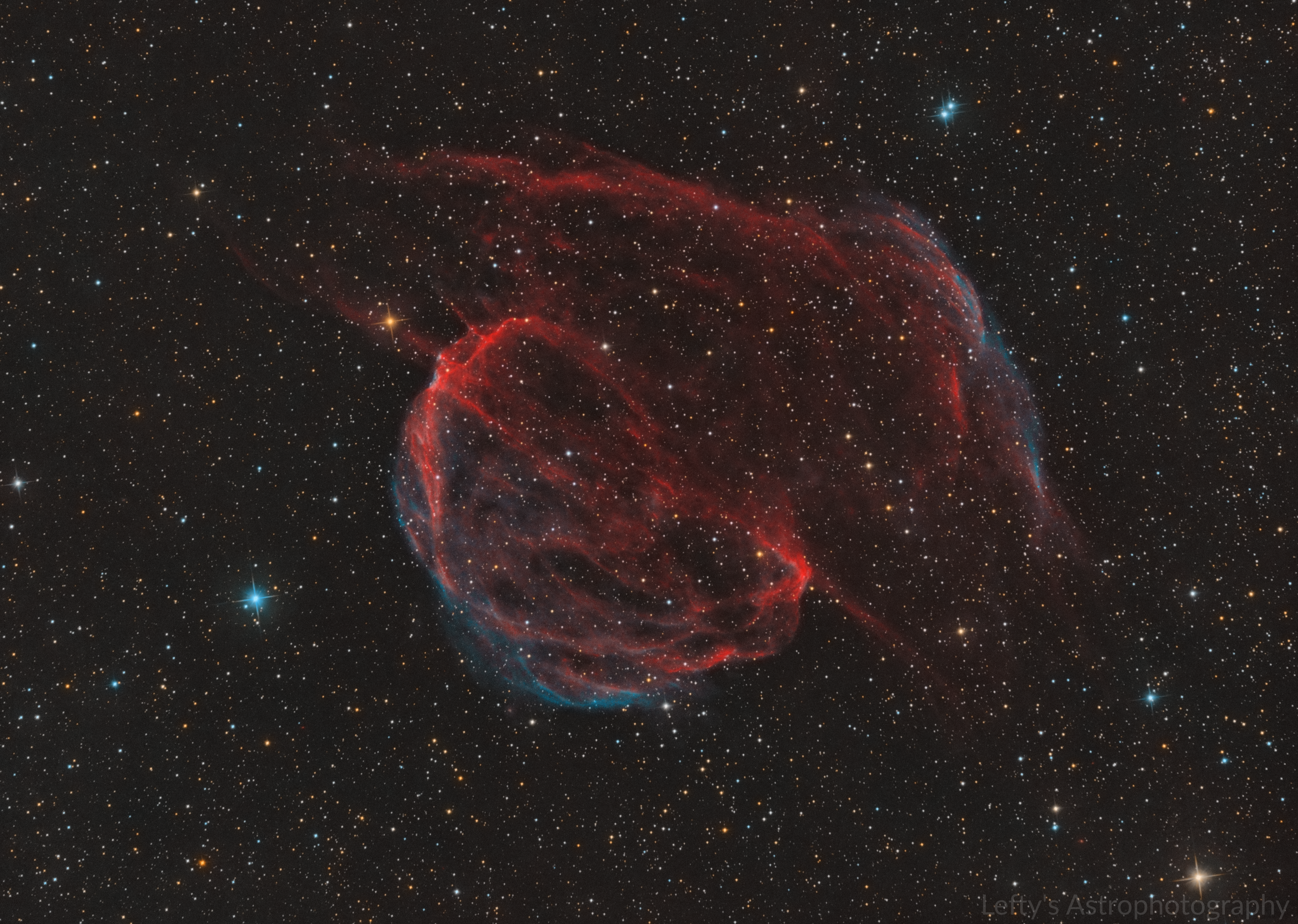this post was submitted on 01 Aug 2023
225 points (100.0% liked)
pics
20551 readers
266 users here now
Rules:
1.. Please mark original photos with [OC] in the title if you're the photographer
2..Pictures containing a politician from any country or planet are prohibited, this is a community voted on rule.
3.. Image must be a photograph, no AI or digital art.
4.. No NSFW/Cosplay/Spam/Trolling images.
5.. Be civil. No racism or bigotry.
Photo of the Week Rule(s):
1.. On Fridays, the most upvoted original, marked [OC], photo posted between Friday and Thursday will be the next week's banner and featured photo.
2.. The weekly photos will be saved for an end of the year run off.
Instance-wide rules always apply. https://mastodon.world/about
founded 2 years ago
MODERATORS
you are viewing a single comment's thread
view the rest of the comments
view the rest of the comments


This is one of my longer projects, with 84 hours of long exposure time over 2 seasons going into this photo. Sh2-224 is an extremely faint nebula, and this is what a single 10 minute long exposure (through a Ha narrowband filter) of it looks like. I ended up getting ~83 hours of narrowband exposures like this, plus about an hour of RGB images for the stars. Because it's so faint, if the moon was up at all I did not shoot it, which cut the number of clear nights I could reasonably image it in half. The nebula itself is false color (although the HOO palette I used is fairly close to natural color), the stars were taken with RGB filters and are true color. With this project I finally managed to learn how to do some starless processing techniques for combining the stars+nebula
Captured over 27 nights between February 2021 and April 2022, from my Bortle 6 driveway
Places where I host my other images:
Instagram | Flickr
Equipment:
TPO 6" F/4 Imaging Newtonian
Orion Sirius EQ-G
ZWO ASI1600MM-Pro
Skywatcher Quattro Coma Corrector
ZWO EFW 8x1.25"/31mm
Astronomik LRGB+CLS Filters- 31mm
Astrodon 31mm Ha 5nm, Oiii 3nm, Sii 5nm
Agena 50mm Deluxe Straight-Through Guide Scope
ZWO ASI-120mc for guiding
Moonlite Autofocuser
Acquisition: 83 hours 52 minutes (Camera at Unity Gain, -20°C)
Ha - 266x600"
Oiii - 231x600"
Red- 14x90"
Green- 14x90"
Blue- 14x90"
Darks- 30
Flats- 30 per filter
Capture Software:
PixInsight Processing:
BatchPreProcessing
SubframeSelector
StarAlignment
Blink
ImageIntegration
DrizzleIntegration (2x, Var β=1.5)
Narrowband processing:
DynamicCrop
DynamicBackgroundExtractions
NoiseXTerminator
StarXterminator to completely remove stars for starless processing
RGB Linear Processing:
DynamicCrop
DynamicBackgroundExtractions
ChannelCombination to combine monochrome R, G, and B frames into color image
PhotometricColorCalibration
Slight SCNR Green
HSV Repair
Combining Channels:
HistogramTransformation to re-linearize HOO and RGB stars images
PixelMath to add RGB stars only image to starless HOO image
Nonlinear:
Shitloads of CurveTransformations to adjust lightness, saturation, contrast, hues, etc. with various masks
ColorSaturation to selective saturate/desaturate specific hues
More curves
Slight SCNR Green
NoiseXterminator
LRGBCombination with extracted L as luminance, used for chrominance noise reduction
even more curves
color saturation again
SCNR to remove some green star color
EZ star reduction
NoiseGenerator to add noise into reduced star areas
LocalHistogramEqualization
guess what baby more curves!
Extract L --> LRGBCombination again with mask for larger scale background chrominance noise reduction
Resample to 70%
Annotation
Excellent work, thank you for sharing with us and please post more!